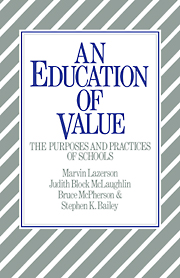Chapter 5 - Computers and learning
Published online by Cambridge University Press: 05 June 2012
Summary
No innovation holds as much promise for achieving equality and excellence in education as microcomputers. In terms of sheer growth, the promise is enormous. In the mid-1980s, more than half of the schools in the United States had at least one computer available for student use. Despite the financial exigencies of school systems and widespread disagreement over actual costs, the trend toward increased use of computers in learning is accelerating. Textbook publishers estimate that within the decade, more than a third of their business will be in computer software. In the Congress and state legislatures, advocates of computer-assisted learning have been calling for “Apple” bills – tax breaks to companies that contribute computers to schools. Major companies like IBM, Digital, and Apple are giving school systems computers and training. A number of colleges and universities such as Carnegie-Mellon University now treat computers as they do books, as a requirement for every student. Harvard University, among others, has signed agreements with companies to make computers available to students at reduced costs. Today it is almost impossible to discuss learning without reference to computers. Computer literacy is the single most talked about item on the educational agenda.
The growth of computer technology is part of Americans' longstanding belief that machines will change their lives. Nineteenth-century Americans approached technology with a mixture of fascination and fear. The machine would transform and improve their world, but it would also wreck and unsettle the natural order of things.
Information
- Type
- Chapter
- Information
- An Education of ValueThe Purposes and Practices of Schools, pp. 83 - 94Publisher: Cambridge University PressPrint publication year: 1985
